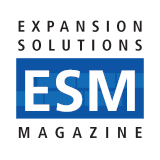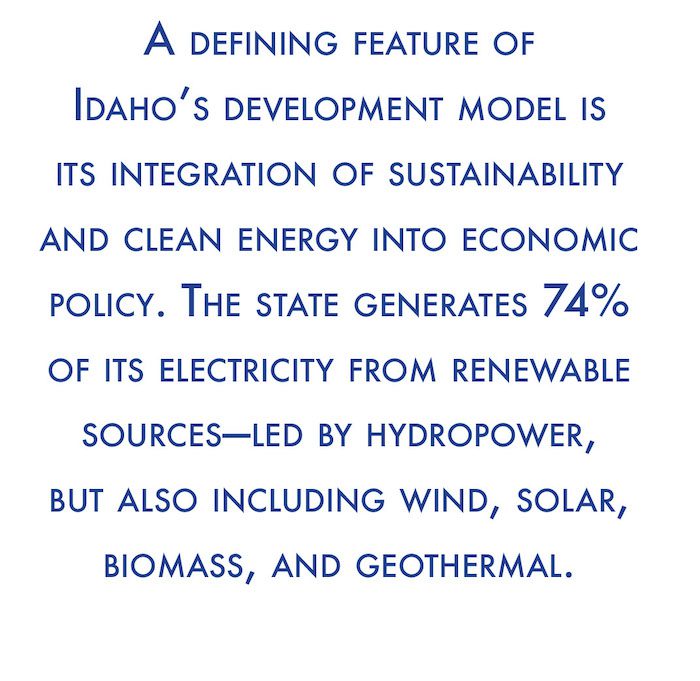Once best known for its breathtaking landscapes and agricultural roots, Idaho is fast emerging as one of the most dynamic economies in the American West. With consistent top rankings in job creation, population growth, and fiscal strength, the Gem State has positioned itself as a model of balanced, sustainable development.
Over the past decade, Idaho’s transformation has been remarkable. Between 2012 and 2022, the state’s population grew by more than 343,000 residents, reaching nearly 1.94 million—a 17.3% increase driven by migration from high-cost coastal states like California and Washington. This influx has fueled strong demand for housing, infrastructure, and jobs while creating fertile ground for business expansion and innovation.
Business Climate Built for Growth
At the heart of Idaho’s economic success is a pro-business climate defined by low taxes, balanced budgets, and light regulation. The state’s GDP reached $90.7 billion in 2021, and projections show continued job growth exceeding 10% by 2031.
Idaho’s economy has diversified far beyond its agricultural base. In addition to producing 30% of the nation’s potatoes, the state is advancing in aerospace, advanced manufacturing, agribusiness, and technology. The Boise metro area—home to industry leaders like Micron Technology and Hewlett-Packard—has seen a 61% increase in tech firms over the last decade, contributing more than $4.1 billion annually to the state’s economy.

Meanwhile, southern Idaho’s agribusiness sector generates nearly half of regional economic output, supported by major employers such as Chobani and AgriBeef. The state’s vibrant tourism and outdoor recreation industries contribute an additional $3.7 billion annually, sustaining more than 45,000 jobs.
Strategic Incentives Driving Expansion
Idaho’s economic development strategy emphasizes targeted, performance-based incentives that lower barriers for business investment and encourage job creation.
The Idaho Tax Reimbursement Incentive (TRI) remains a cornerstone of the state’s approach. The program offers a tax credit of up to 30% on new state tax revenues for up to 15 years, available to businesses investing at least $500,000 and creating ten or more qualifying jobs. This incentive has successfully attracted expansions in advanced manufacturing and high-tech sectors, including Micron’s record-setting investment.
Other key tools include:
- Property and sales tax exemptions for capital-intensive projects.
- Grants and loans through the Idaho Department of Commerce and the U.S. Small Business Administration to support small business growth and innovation.
- The New Markets Tax Credit, made permanent in 2025, has driven more than $470 million in private investment into rural and underserved communities.
- 28 federally designated Opportunity Zones offering capital gains tax deferrals and reductions for long-term investors.
Small businesses are a critical component of Idaho’s economy—representing 97.6% of all businesses and employing more than half of the private workforce—and continue to benefit from the state’s flexible and accessible programs.
 Sustainability as a Growth Strategy
Sustainability as a Growth Strategy
A defining feature of Idaho’s development model is its integration of sustainability and clean energy into economic policy. The state generates 74% of its electricity from renewable sources—led by hydropower, but also including wind, solar, biomass, and geothermal.
This abundance of clean, affordable energy is a major draw for manufacturers in sectors such as chemical production, packaging, and food processing. The Governor’s Office of Energy and Mineral Resources supports these industries through low-interest efficiency loans and renewable energy incentives, including a 40% state tax deduction and a 30% federal tax credit for solar projects.
Programs like Rocky Mountain Power’s Wattsmart and the Environmental Quality Incentives Program encourage energy efficiency and sustainable agriculture, reinforcing Idaho’s reputation as both a business-friendly and environmentally responsible state.
A Model for Sustainable Economic Development
Idaho’s holistic strategy—outlined in the “Idaho Strong” plan for 2023–2028—focuses on building resilience through workforce development, infrastructure, and regional collaboration. Initiatives like the LAUNCH workforce training program, offering up to $8,000 in education funding per participant, help close skills gaps and prepare Idahoans for careers in advanced industries.
The results speak for themselves. The state ranks second nationally in economic outlook and consistently among the top states for livability, fiscal health, and opportunity. Broadband expansion, housing initiatives, and new workforce pipelines are ensuring Idaho’s growth remains inclusive and sustainable.
The Gem State Advantage
For companies seeking a strategic location with low operating costs, abundant renewable energy, and an unmatched quality of life, Idaho stands out as a premier destination for business relocation and expansion.
By combining pro-growth incentives, sustainable infrastructure, and a skilled workforce, Idaho demonstrates that economic success and environmental stewardship can go hand in hand—creating not just short-term opportunity, but a lasting foundation for prosperity.




